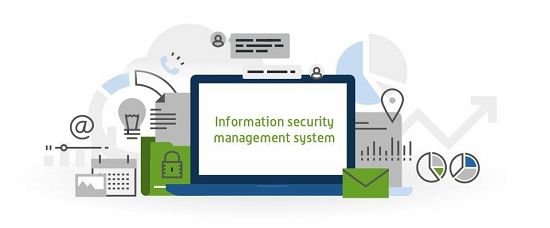With the continuous advent of security and privacy threats, organizations in whatever industry and of all sizes must come up with sophisticated technologies that have the capacity to combat cybersecurity attacks. That and the need for an organization's processes, policies, and staff behavior to be able to minimize such risks.
This is where information security becomes important and where information security management systems come into place.
What is Information Security?
Information security involves policies and commands that oversee security and risks within an enterprise. These security controls can be all about common security standards or be more industry-specific.These are solutions that can help you recognize and take care of threats that could exploit your valuable information and any related assets.
- Confidentiality - valuable data is only available to authorized people, entities, or processes
- Integrity - the information is complete and precise and safeguarded from corruption
- Availability - the information is accessible and convenient for authorized users

Apart from ensuring your company complies with a range of laws and regulations, these systems are also designed to protect three essential aspects of information:
What is ISO 27001?
ISO 27001 is the international standard that covers compliance requirements and states the specification for best-practice information security management systems.
Earning an ISO 27001 compliance or certification will allow you to prove your organization's ongoing information security excellence and efficiency.
Popular Information Security Management Systems Frameworks
In addition to the ISO 27001 standard, there are other frameworks that also offer valuable ISMS guidance. Some examples include:
ITIL
Includes a dedicated element known as Information Security Management (ISM). It's also a widely adopted service management framework that aims to align IT and business security to make sure information security is effectively taken care of at all times.
COBIT
COBIT is also an IT-focused framework. It mainly focuses on how asset management and configuration management can be integrated with information security and other ITSM functions.
Continuous improvement of Information Security Management Systems
ISO 27001 states that information security implementation follows a specific model for continuous improvement. The procedures included are:
1. Plan
- Identify the problems and gather valuable data for security risk assessment
- Establish processes and policies that should be implemented
- Develop strategies to continually enhance information security management capabilities
2. Do
- Deploy security policies and procedures
3.Check
- Evaluate the effectiveness of ISMS policies and controls
- Assess tangible outcomes and behavioral aspects of the ISMS processes
4.Act
- Focus on constant improvement
- Record the results, share knowledge, and use a feedback
Information Security Management Systems Controls
Another specification of the ISO 27001 standard is that information security management controls include practical guidelines with the following objectives:
- Information security policies
- Organization of information security
- Asset management
- Human resource security
- Physical and environmental security
- Communications and operations management
- Access control
- Information system acquisition, development, and maintenance
- Information security and incident management
- Business continuity management
- Compliance
- Cryptography
- Supplier relationships
5 Reasons Why Your Organization Needs to Implement Information Security Systems
Here are some of the most crucial reasons why you need to carry out a solid ISMS within your company:
1. Improve information security - ISO 27001's main objective is to boost an organization's information security practices.
2. It's often required when presenting new business - Information security is a crucial aspect for many organizations. This is why most suppliers insist on and favor third-party entities that follow best practices.
3. It helps you comply with the GDPR - ISO 27001 has a lot in common with the GDPR (General Data Protection Regulation), which is why it's helpful to use the Standard's framework as the basis of an organization's GDPR implementation project.
4. It ensures legal and regulatory compliance - Apart from the GDPR, the ISO 27001 standard can also help organizations comply with a wide range of regulations that includes information security requirements.
5. It gives you a competitive edge - Demonstrating effective defense measures is just as important as establishing ISMS. Your chances of winning vendors, sub-suppliers, or individual customers increase when you're able to showcase an ISO 27001 certificate.
Why Xcitium?
Fending off cybersecurity attacks can be made easier by executing smart and effective defenses, such as a robust information security management system. Keep in mind that a reliable ISMS solution is built on three pillars, which are the people, processes, and technology. Carrying out this kind of solution helps your company to secure your information, boost your resilience to cyber attacks, and minimize the costs associated with information security.
Fortify your cybersecurity with solutions that work. Look no further than Xcitium as we can help you implement security measures that are recognized by leading industry associations. We have innovative technologies that can help you no matter what industry you play in and where you are in the world.
